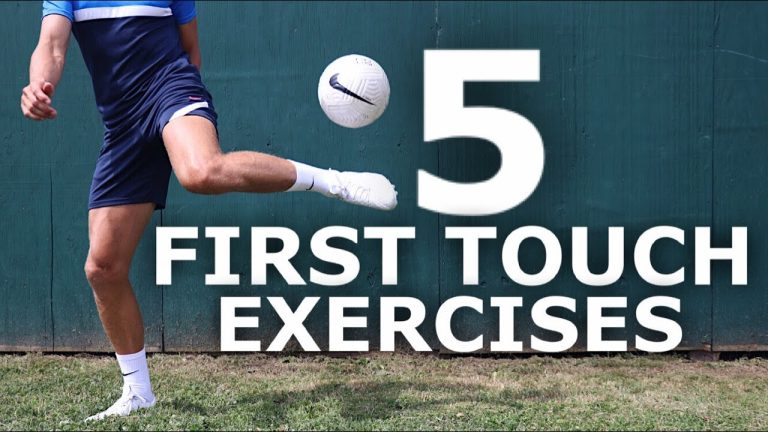When it comes to being a goalkeeper, one crucial skill that often goes unnoticed is the ability to recover quickly after aerial duels. In a split second, goalkeepers must react, challenge for the ball and then immediately regain their position to be ready for the next attack. This demanding aspect of the game requires not only athleticism and agility, but also mental sharpness and strategic positioning. In this article, we delve into the art of recovering swiftly after aerial duels, exploring the techniques and mindset that enable goalkeepers to execute this skill flawlessly.
Why is cardiovascular endurance important for goalkeepers?
Goalkeepers require cardiovascular endurance to excel in their position. While they may not cover extensive distances like their outfield counterparts, maintaining optimal concentration and energy levels throughout the game is crucial. This endurance ensures that goalkeepers remain alert and focused, ready to make split-second decisions and react swiftly to incoming shots. By honing their cardiovascular fitness, goalkeepers can consistently perform at their peak and provide a resolute defense for their team.
Cardiovascular endurance is a vital asset for goalkeepers, enabling them to uphold their performance levels throughout the match. Although they may not engage in prolonged running, goalkeepers must sustain their concentration and energy to effectively guard the goal. With superior cardiovascular fitness, they can counter fatigue and remain mentally sharp, making crucial saves even during demanding moments. By prioritizing their endurance training, goalkeepers can enhance their overall effectiveness and provide a steadfast presence between the posts.
What is the reason for goalkeepers dropping down after catching a ball?
Goalkeepers often drop down after catching a ball to ensure maximum control and protection. When facing a hard shot, the keeper may not be able to securely grip the ball, so dropping to the ground allows them to “pin” it between their body and the surface. Additionally, this action serves as a defensive measure. By making clear contact with the keeper rather than the ball, any potential challengers are deterred and the goalkeeper’s position is safeguarded.
The decision to drop down after catching a ball also helps goalkeepers maintain their advantage during challenges. When a keeper drops to the ground, they create a barrier between the ball and any oncoming opponents. This strategic move not only secures the ball but also ensures that any challengers will have to make contact with the keeper first, making it much more challenging for them to disrupt the play. By dropping down, goalkeepers assert their dominance and protect the integrity of their position.
In addition to control and protection, dropping to the ground after catching a ball allows goalkeepers to initiate quick counterattacks. By swiftly securing the ball between their body and the ground, keepers can immediately release it to their teammates and initiate a fast break. This efficient transition from defense to offense catches opponents off guard and increases the chances of scoring a goal. The ability to quickly distribute the ball after a catch is a crucial skill that sets skilled goalkeepers apart and contributes to their team’s success.
How frequently do goalkeepers suffer injuries?
Goalkeepers are no strangers to injury, as their position exposes them to a wide range of physical risks. However, it is important to note that the frequency and severity of injuries can vary greatly depending on various factors such as playing style, level of competition, and individual susceptibility. While goalkeepers may endure occasional injuries due to collisions, dives, or powerful shots, their training and protective gear help minimize the risk. Ultimately, the level of risk for goalkeepers is relative and cannot be generalized as “a lot,” but rather it is crucial for them to prioritize proper technique, conditioning, and safety measures to reduce the likelihood of getting hurt.
Rise Above: Perfecting Aerial Duels for Goalkeeping Dominance
Rise above the competition and perfect your skills in aerial duels to claim goalkeeping dominance. With unwavering focus and precise technique, you can soar through the air, commanding your penalty area with confidence. Harnessing your athleticism and agility, you will leave opponents in awe as you effortlessly pluck crosses from the sky, denying them any chance of scoring. By honing your timing and reading the game, you will become an impenetrable force, dominating the aerial battles and ensuring your team’s success. Embrace the challenge, elevate your game, and rise above the rest in aerial duels for goalkeeping supremacy.
Defying Gravity: Unleashing your Aerial Prowess as a Goalkeeper
Defying Gravity: Unleashing your Aerial Prowess as a Goalkeeper
Rising above the field, goalkeepers possess an unrivaled ability to defy gravity and showcase their aerial prowess. With lightning reflexes and unmatched agility, these custodians of the net soar through the air, defying the limitations of human capabilities. Their acrobatic saves leave spectators in awe, as they twist and turn to deny opponents the joy of scoring. By mastering the art of defying gravity, goalkeepers become the unsung heroes of the game, safeguarding their team’s victory with every leap and dive.
To unleash your aerial prowess as a goalkeeper, it requires a combination of technical skill, mental fortitude, and fearless determination. The ability to read the game, anticipate opponents’ movements, and position oneself perfectly is essential. Training your body to achieve optimal balance, strength, and flexibility becomes paramount in order to execute those jaw-dropping mid-air saves. By honing these skills and embracing the challenge of defying gravity, goalkeepers can elevate their game to new heights, leaving opponents and fans alike in awe of their extraordinary abilities.
In the high-stakes world of goalkeeping, recovering quickly after aerial duels is a skill that can make all the difference. By swiftly regaining their composure and positioning, goalkeepers can maintain their team’s defensive stability and prevent any potential scoring opportunities. With lightning-fast reflexes and a keen sense of anticipation, these keepers seamlessly transition from the heights of the aerial battle back to terra firma, ready to face whatever challenges may come their way. Their ability to recover quickly after aerial duels not only showcases their agility and athleticism but also highlights their unwavering commitment to protecting their team’s goal.




